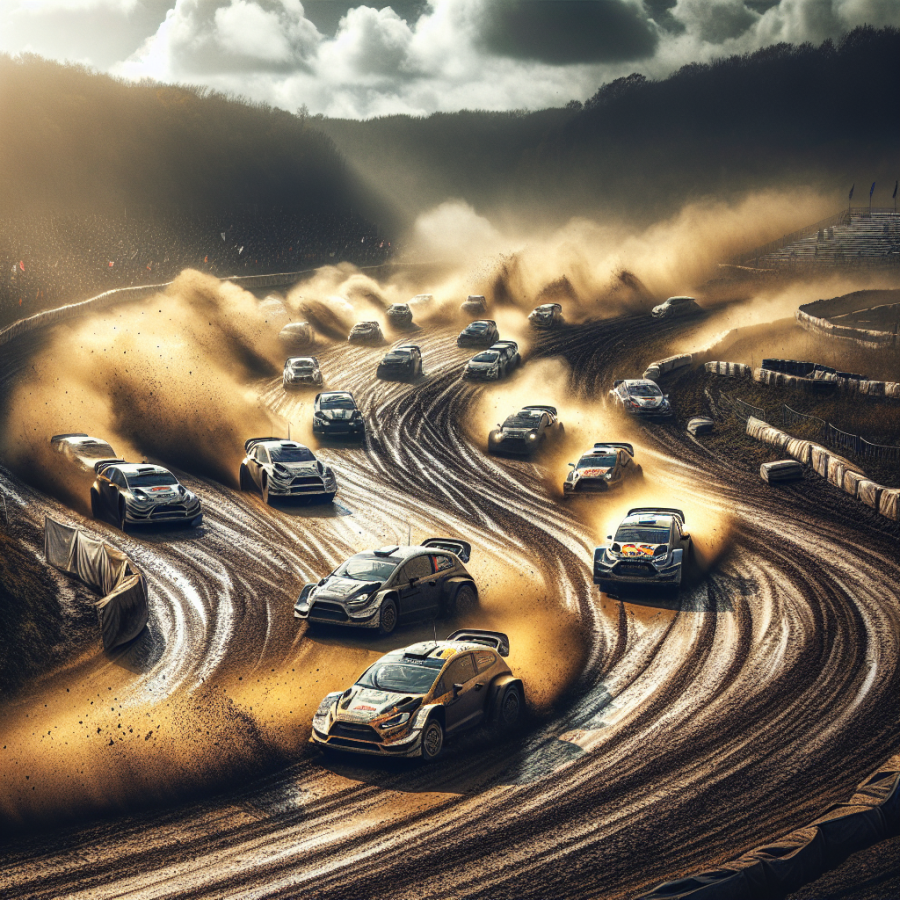The Pulse-Pounding Adrenaline Rush of High-Speed Rallycross Competitions
Rallycross competitions deliver an electrifying motorsport experience quite unlike any other, combining the precision of road racing with the untamed spirit of off-roading. Drivers must navigate a challenging mix of track surfaces which include gravel, dirt, and asphalt, forcing them to demonstrate a high level of adaptability and car control. This diversity is not only a test of the driver's skill but also puts the car's performance and durability under intense scrutiny.
The adrenaline starts pumping right from the starting line as the drivers battle for position in the crucial first corner. Starting positions are crucial in rallycross due to the typically short nature of the races. With each race being a sprint, there's no luxury of time for drivers to gradually build up their positions. It’s an all-or-nothing dash where a good start can mean the difference between victory and the back of the pack.
Spectators can feel the intensity as the turbocharged engines let out a thunderous roar, and drivers simultaneously hit the throttle, racing off the line with a ferocity that matches the growl of their engines. The power of these vehicles is immense, with many boasting upwards of 600 horsepower, capable of going from 0 to 60 miles per hour in less than two seconds, rivaling even the acceleration of a Formula One car.
As the competition progresses, so does the demand on drivers to exhibit extreme levels of precision and concentration. Rallycross is unforgiving; small errors can have massive repercussions. Drivers must perfectly time their jumps, hurtling through the air, while maintaining control upon landing to seamlessly continue their high-speed charge. Observers can almost catch the collective breath-hold of the crowd as cars become airborne, the spectacle itself a display of engineering and courage.
In rallycross, the signature feature is the 'joker lap'—a slightly longer route that each driver must take once per race. This strategic element adds a complex layer to the sport, as timing the joker lap can lead to significant shifts in race standings. Drivers must weigh the risk of traffic and track conditions against potential advantages, creating an erratic and unpredictable race dynamic.
The close-quarters racing in rallycross is not for the faint of heart. Scrapes and collisions are a part of the game as vehicles rub against each other, vying for the same piece of tarmac.
Read also:
Park Golf: A Guide to the Fun and Accessible Sport for All Ages
Exhilarating Turns and Gravity-Defying Jumps of Rallycross Racing
Rallycross racing is a motor sport that combines the sheer excitement of high-speed racing with challenging, technical courses designed to push drivers and their vehicles to the limit. One of the most thrilling aspects of rallycross is the unique track design, which often includes exhilarating turns coupled with gravity-defying jumps that captivate spectators and challenge racers.
These exhilarating turns are not like the standard corners found on typical race tracks. Rallycross courses twist and bend in ways that require razor-sharp precision and unfaltering concentration from the drivers. The tracks are composed of a mix of tarmac and dirt, and the sudden changes in surface grip levels demand quick reflexes and the ability to adapt driving styles in a split second. These dynamic turns can create moments of breathless anticipation as fans watch to see if the drivers can maintain control while sliding sideways through the dirt, only to transition back onto asphalt at breakneck speeds.
Rallycross jumps are another highlight that adds a three-dimensional aspect to the sport. They test the suspension systems of the cars and the courage of the drivers. As the vehicles approach these jumps at speed, adrenaline courses through the veins of both drivers and spectators. When a car launches into the air, it's a spectacular sight that defies the normal constraints of racing - gravity seems momentarily suspended as these powerful machines soar before landing back on the track. This momentary flight requires precise speed control; too fast and the car risks damage on the landing, too slow and the driver may lose precious time or position.
The ability to tackle these jumps successfully lies in the car setup, tire selection, and the driver's deep understanding of how their vehicle handles under such extreme conditions. A driver must gauge the approach correctly, hit the jump at the right angle, and manage throttle control to ensure the vehicle’s nose is oriented appropriately for the landing. All of this must be done while still preparing for the immediate challenge that follows - be it a tight hairpin turn or a rapid acceleration down a straightaway.
Rallycross races are often short, explosive, and packed with action, which means that every jump and turn can make or break a driver's performance on any given lap. This intense, high-stakes environment is partly why rallycross has garnered a growing fan base worldwide. The dynamism and spectacle of cars flying and sliding around the course provide an engaging and visceral motorsport experience that is hard to match.




